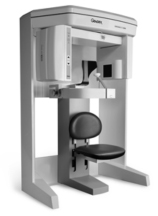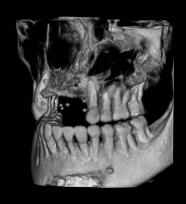Missing Front Teeth
An implant can replace a missing front tooth without requiring healthy adjacent teeth to be ground down in order to support a bridge.
Missing Multiple Teeth
When two or more teeth are missing, the gap can be filled by anchoring a bridge over two or more implants, thereby eliminating the need to secure a partial denture to healthy teeth. Anyone who has worn a partial denture can attest to the fact that they are not an ideal solution. Over time they can cause a healthy tooth to loosen and the underlying jaw bone to disappear.
For people missing all their teeth from the upper or lower jaw, implants can build a strong foundation for supporting a denture. Because the denture is seated on implants the painful sore spots that often trouble denture wearers are eliminated. Since an implant supported denture is securely held in place you can speak and eat with confidence. Additionally, the presence of the implant in the jaw bone preserves the jawbone. In some cases, this bone preservation helps to maintain the shape of your face.
In addition to securing and stabilizing dentures, dental implants can also be used to fix teeth permanently in either jaw.
Steps in getting an implant
1. Planning: Includes x-rays and often a cone-beam computerized tomographic scan, a thorough examination of your mouth and perhaps dental models to determine the most suitable treatment for your situation.
| 2. CBCT Scan (Cone Beam Computerized Tomography): We utilize a Cone Beam 3D dental imaging system for diagnosis and treatment planning for nearly all dental implant cases. This allows the dental surgeon to view an accurate and detailed three-dimensional view of the patient’s anatomical structures such as bone, teeth, nerve orientation and sinuses. This affords increased surgical precision and results in reduced risk for patients. We are pleased to offer this diagnostic service in our office, thus saving the patient a visit to a diagnostic imaging clinic. |  |


3. Placement: The implant is placed in the jawbone. If there is not adequate jaw bone naturally, a bone graft or sinus lift (for upper back teeth) may be performed and left to heal prior to implant placement. These procedures are usually performed in our dental office under local anesthesia. The implant is then left to heal or “integrate”. Depending on your circumstance, this will take between six to sixteen weeks.
4. Restoration: Once healing is complete the replacement teeth crowns are manufactured and attached.
Caring for implants
Just like your natural teeth, implants require check-ups and conscientious homecare. Their long-term success depends on keeping your teeth and implants clean and plaque free. With proper care and maintenance, long-term studies confirm a success rate of over 95% after ten years.